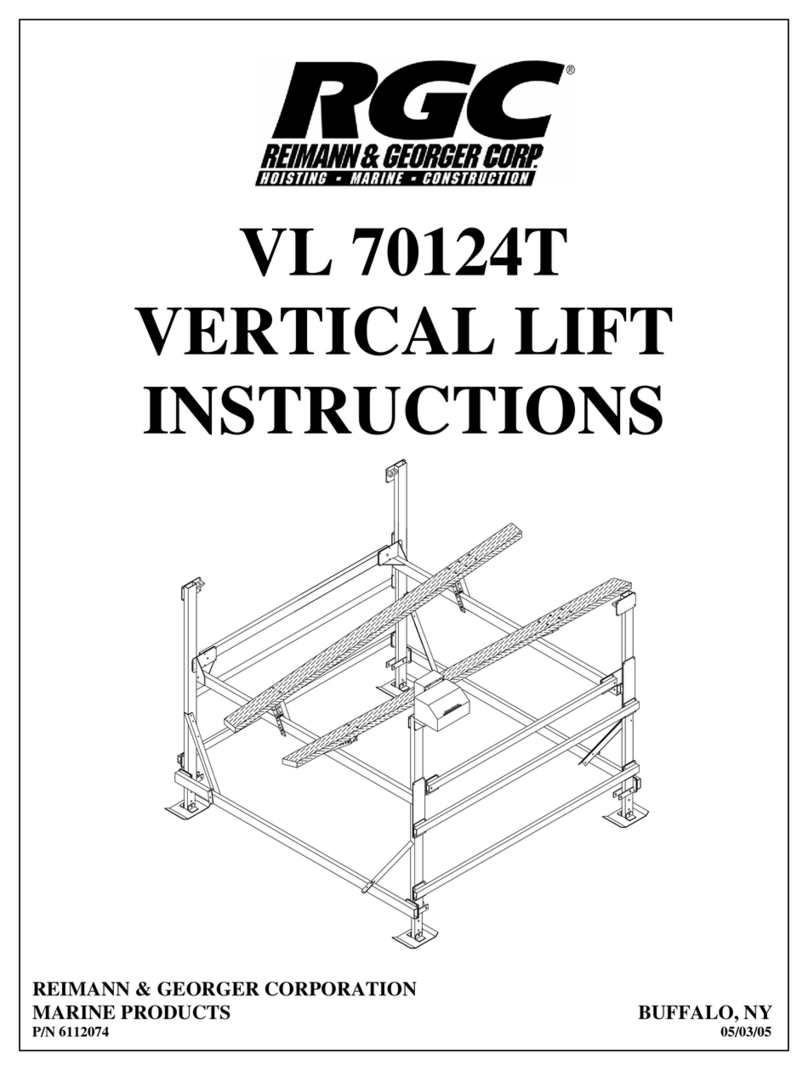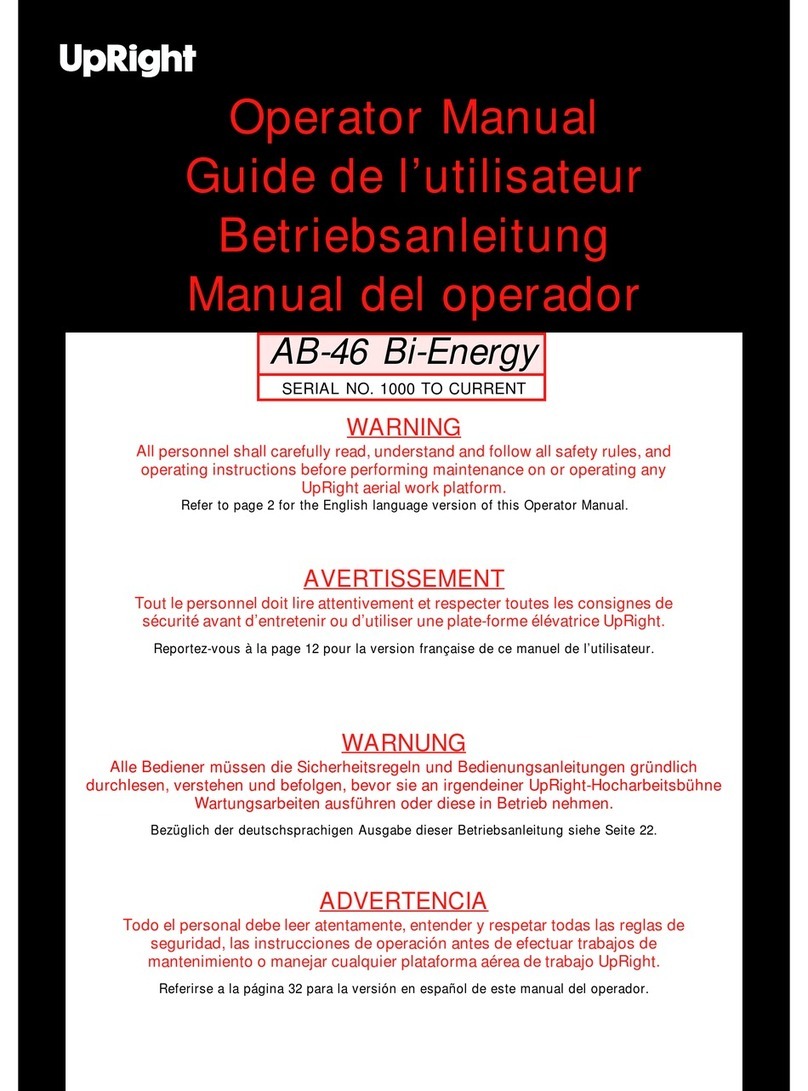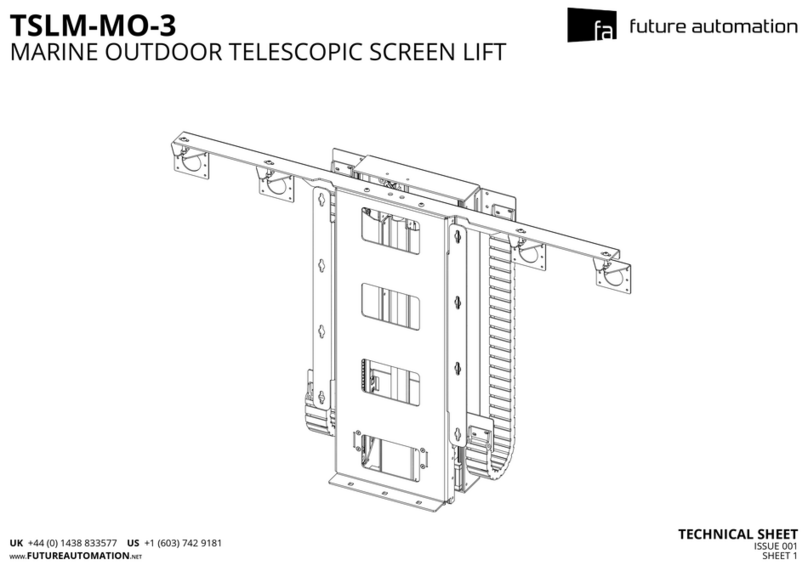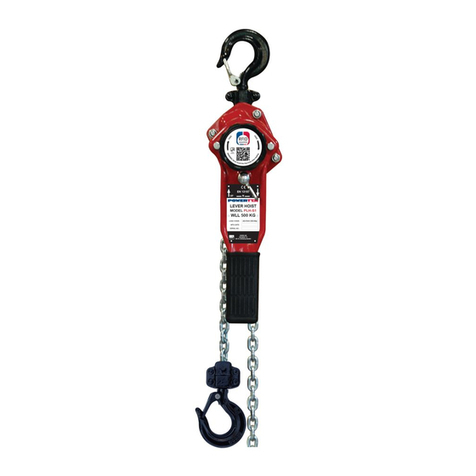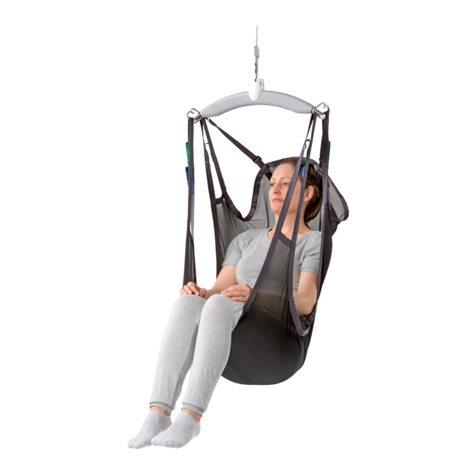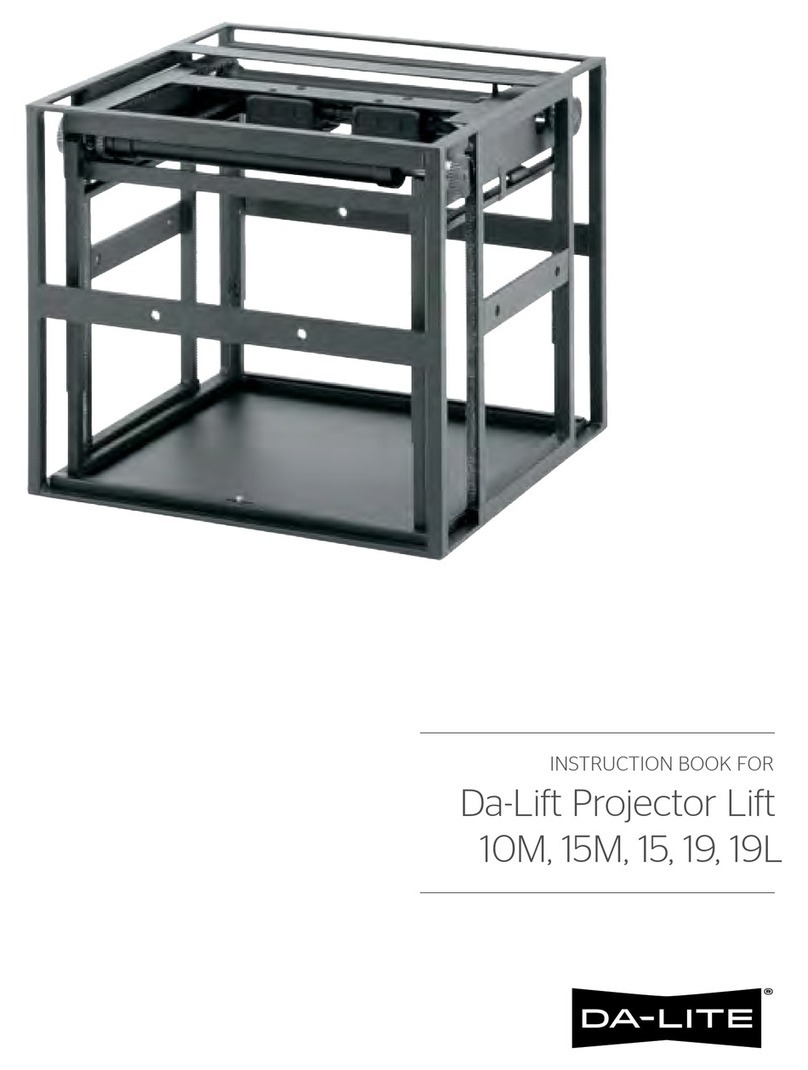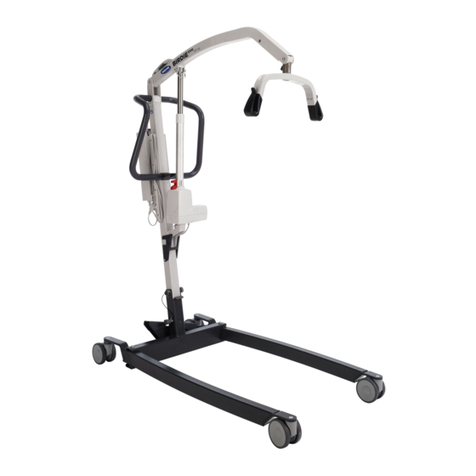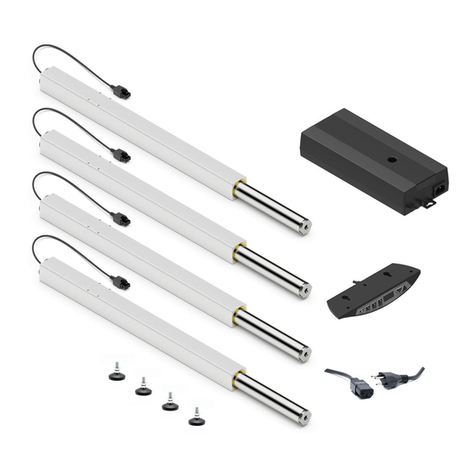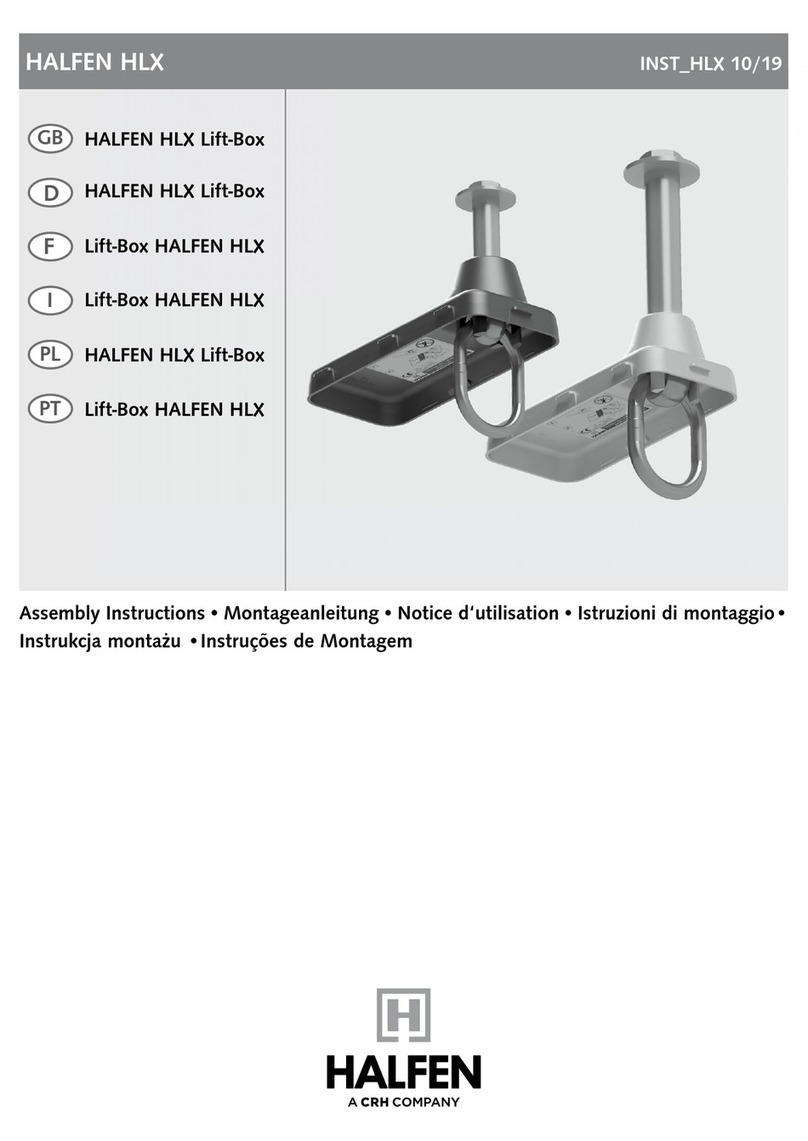Henkel PLG-XH User manual

LG_XH_CNH_EFF_ALL_8520301_011.DOC
HENKE PARALLEL LIFT GROUP
HENKE MODEL: PLG-XH, AQC-XH, STB-XH
For CASE & NEW HOLLAND SERIES MOTOR GRADERS
PARTS BOOK AND INSTALLATION MANUAL
SERIAL NUMBER: __________________ VERSION 1.1, JULY 2012
HENKE MANUFACTURING CORPORATION
MANUFACTURERS OF SNOW REMOVAL EQUIPMENT FOR 95 YEARS
3070 WILSON AVE. LEAVENWORTH, KS 66048 PHONE(913)682-9000 FAX(913)682-0300
Parallel Lift Head
Scarifier Tool Bar
AQC Lift Head

LG_XH_CNH_EFF_ALL_8520301_011.DOC Page 2 of 21
Introduction
Thank you for your purchase of a Henke Lift Group. Your new Lift Group is designed
with heavy-duty features for years of reliable use.
In addition to their field-proven standard units, Henke designs and manufactures many
plows and hitches to meet specific customer requirements.
Call Henke at 913-682-9000 if you need any replacement parts, or if we can provide you
any other assistance.

LG_XH_CNH_EFF_ALL_8520301_011.DOC Page 3 of 21
TableofContents
Introduction ................................................................................................................................................................ 2
Safety ............................................................................................................................................................................ 4
Maintenance ............................................................................................................................................................... 5
Parts Lists for Reversible Lift Group ................................................................................................................ 7
Cutting Edges, Curb Guards, Wear Guards .................................................................................................. 17
Warranty Policy & Procedure ........................................................................................................................... 20
ListofFigures
FIGURE 1 – Extra Heavy Lift Groups .................................................................................................... COVER
FIGURE 2 – Extra Heavy Parallel Lift Goup with Parallel Lift Head .................................................... 7
FIGURE 3 – Extra Heavy Parallel Lift Goup with Scarrifier Tool Bar ................................................. 9
FIGURE 4 – Extra Heavy Parallel Lift Goup with AQC Lift Head ......................................................... 11
FIGURE 5 – Hydraulic Plumbing for Lift Group Cylinder ...................................................................... 13
FIGURE 6 – Hydraulic Plumbing Schematic ................................................................................................ 14
ListofTables
TABLE 1 – Extra Heavy Parallel Lift Goup with Parallel Lift Head, Parts List ................................ 8
TABLE 2 – Extra Heavy Parallel Lift Goup with Scarrifier Tool Bar, Parts List ........................... 10
TABLE 3 – Extra Heavy Parallel Lift Goup with AQC Lift Head, Parts List ..................................... 12
TABLE 4 – Hydraulic Valve Kit for 7080563 Holding Valve ................................................................ 14
TABLE 5 – Hydraulic Hose Kit .......................................................................................................................... 15
TABLE 6 – Hydraulic Hose Kit for Extra Heavy Lift Group ................................................................... 15
TABLE 7 – Cutting Edges ..................................................................................................................................... 17
TABLE 8 – Cutting Edge Hardware ................................................................................................................. 18
TABLE 9 – Henke Curb Guards & Wear Guards ........................................................................................ 19

LG_XH_CNH_EFF_ALL_8520301_011.DOC Page 4 of 21
<<THIS PAGE IS INTENTIONALLY LEFT BLANK>>

Safety Section 1-1
© 2009 Alamo Group Inc.
SAFETY SECTION

SAFETY
Lift Groups Safety Section 1-2
© 2009 Alamo Group Inc.
SAFETY
GENERAL SAFETY INSTRUCTIONS AND PRACTICES
A careful operator is the best operator. Safety is of primary importance to the manufacturer and should be to
the owner/operator. Most accidents can be avoided by being aware of your equipment, your surroundings, and
observing certain precautions. The first section of this manual includes a list o f Safety Messages that, if
followed, will help protect the operator and bystanders from injury or death. Read and understand these Safety
Messages before assembling, operating or servicing this Implement. This equipment should only be operated
by those persons who have read the manual, who are responsible and trained, and who know how to do so
responsibly.
The Safety Alert Symbol combined with a Signal Word, as se en below, is use d throughout this
manual and on decals which are attached to the equipment. The Safety Aler t Symbol means:
“ATTENTION! BECOME ALERT! YOUR SAFETY IS INVOLVED!” The Symbol and Signal Word
are intended to warn the owner/operator of impending hazards and the degree of possible injury
faced when operating this equipment.
Indicates an imminently hazardous situation that, if not avoided, WILL result in DEATH OR
VERY SERIOUS INJURY.
Indicates an imminently hazardous situation that, if no t avoided, COULD result in DE ATH
OR SERIOUS INJURY.
Indicates an imminently hazardous situation that, if not avoided, MAY result in MINOR
INJURY.
Identifies special instructions or procedures that, if no t strictly observed, could result in
damage to, or destruction of the machine, attachments or the environment.
NOTE: Identifies points of particular interest for more efficient and convenient operation or repair.(SG-1)
Practice all usual and customary safe working precautions and above all---remember safety is
up to YOU. Only YOU can prevent serious injury or death from unsafe practices.
READ, UNDERSTAND, and FOLLOW the following Safety Messages. Serious injury or
death may occur unless care is taken to follow the warnings and instructions stated in the
Safety Messages. Always use good common sense to avoid hazards. (SG-2)

SAFETY
Lift Groups Safety Section 1-3
© 2009 Alamo Group Inc.
SAFETY
Repeated or substantial breathing of hazardous dusts, including
crystalline silica, could cause fatal or serious respiratory disease including
silicosis. Concrete, masonry, many types of rock, and various other
materials contain silica sand. California lists respirable crystalline silica as
a substance known to ca use cancer. Operation of this equipment under
certain conditions may generate airborne dust particles that could contain
crystalline silica. In those conditio ns, personal protective equipment
including an appropriate respirator must be used. If excessive dust is
generated, a dust collection or suppression system should also be u sed
during operation. (SG-41)
Si no lee ingles, pida ayuda a alguien que si lo lea para que le traduzca las
medidas de seguridad. (SG-3)
Never operate the Sno w Plow until you have rea d and completely
understand this Manual , the Truck or Power units Operator’s
Manual, and each of the Safety Messages found in these Manuals
and those affixed to the Snow Plow, Truck, or Power units and its
components. Learn how to stop the power unit engine suddenly in
an emergency
.
Never allow inexperienced or untrained personnel
to operate the Truck or Pow er unit and Sno w Plow without
supervision. Make sure the operator has fully read and understood
the manuals prior to operation.
(SPNG-4)
In addition to the design and configuration of this Snow Plow, including Safety Signs and Safety Equipment,
hazard control and accident prevention are dependent upon the awareness, concern, prudence, and proper
training of personnel involved in the operation, transport, maintenance, and storage of the machine. Refer
also to Safety Messages and operation instruction in each of the appropriate sections of the Truck or Power
unit Manuals. Pay close attention to the Safety Signs affixed to the Snow Plow. (SNPG-5)
PARTS INFORMATION
HENKE Snow Plows use ba lanced and matched system components for plows, carriers, and other
components. These p arts are made and tested to HENKE specifications. Non-genuine or “will fit" parts do
not consistently meet these specifications. The use of non-genu ine or “will fit” parts may reduce Snow Plow
performance, void HENKE warranties, and present a safety hazard. Use genuine HENKE parts for economy
and safety. (SNPG-6)
SEE YOUR HENKE DEALER
Always maintain the safety signs in good readable condition. If the safety signs are missing,
damaged, or unreadable, obtain and install replacement safety signs immediately. (SG-5)

SAFETYL
Lift Groups Safety Section 1-4
© 2009 Alamo Group Inc.
SAFETY
OPERATOR SAFETY INSTRUCTIONS AND PRACTICES
All Safety Shields, Guards and other Protective Safety devices should be used and
maintained in goo d working condition. All safety devices should be inspected
carefully at least daily for missing or broken components.
NEVER REMOVE
PROTECTIVE SHIELDS AND GUARDS! NEVER MODIFY OR CUT PROTECTIVE SHIELDS OR
GUARDS!
When shields or guards are removed to access areas for maintenance, they must be
replaced and be in good condition before operating. M issing, broken, or worn shields,
guards, and other protective devices must be replaced at once and prior to operation
to reduce the possibility of injury.
(SNPS-02)
The Snow Plow power unit should be equipped with a fire extinguisher, rated for all fires, in
an accessible and visible area. T he fire extinguisher should be inspected routinely by a
certified inspector for operational use and replaced as needed. Never obstruct access to
the fire extinguisher. (SNPS-6)
NEVER use drugs or alcohol immediately before or while driving or operating the Snow
Plow. Drugs and alcohol will affect an operator’s alertness and coordination and therefore
affect the operator’s ability to operate the Equipment safely. Before operating the
Equipment, an op erator on prescription or over-the-counter medication must
consult a medical professional regarding any side ef fects of the medication
that would hinder their ability to operate the Equipment safely. NEVER
knowingly allow anyone to op erate this Equipment when their alertness or
coordination is im paired. Serious injury or death to the operator or others
could result if the operator is under the influence of drugs or alcohol. (SNPD-3)
Always wear OSHA a pproved Personal Protective Equipment (PPE) while operating,
servicing, repairing, and/or cleaning the Equipment. PPE is designed to provide bodily
protection during such activities.
Personal Protective Equipment includes:
-Protective Eye Wear
-Steel Toed Safety Footwear
-Gloves
-Hearing Protection
-Close Fitted Clothing
-Hard Hat-When working around a raised hopper.
-Respirator-Depending on conditions and material being swept or cleaned.
Specialized protective equipment may be required if dangerous or hazardous material is being moved by the
plow. (SNPD-4)

SAFETY
Lift Groups Safety Section 1-5
© 2009 Alamo Group Inc.
SAFETY
Prolonged operation of the Snow Plow ma y cause operator boredom and/or fatigue
affecting the safe operation of the Snow Plow and Truck or Power unit. It is recommended
that the op erator take scheduled work breaks to help prevent these potentially impaired
operating conditions. If p ossible, completely shut down th e Equipment, exit the cab and
move around stretching your arms and legs. Never operate the Equipment in a fatigued or
bored mental state that impairs proper and safe Equipment operation. (SNPD-5)
PROLONGED EXPOSURE TO LOUD NOISE MAY CAUSE
PERMANENT HEARING LOSS!
Equipment operation can o ften
be noisy enough to cause permanent hearing loss. We
recommend that you always wear hearing protection if the noise in
the Operator’s position exceeds 80db. Noise over 85db over an
extended period of time wil l cause severe hearing loss. N oise
over 90db adjacent to the Operator over an e xtended period of
time will cause permanent or total hearing loss.
Note:
Hearing
loss from loud noise [from sweepers, chain saws, radios, and
other such sources close to the ear] is cumulative over a lifetime
without hope of natural recovery.
(SNPD-6)
Prolonged operation of the Equipment in col d weather may cau se operator hypothermia
affecting the safe operation of the Snow Plow and Truck or Power unit. It is recommended
that the operator wear appropriate clothing take scheduled work breaks to help prevent
these potentially impaired operating conditions. If pos sible, completely shut down the
Equipment, exit the cab and warm the body in a properly heated area. Never operate the
Equipment in a fa tigued or impaired mental state that effects the proper and safe
Equipment operation. (SNPD-8)
Use both hands for support when getting on and off the truck or power unit. Use handles
and steps on the equipment for support when boarding. Never use the Truck or Snow Plow
control levers for support when boarding the equipment. (SNPO-01)
Use available truck or power unit handles and steps to exit th e operator’s station. Make
sure you have solid footing before stepping down. Be car eful of your step and use extra
caution when mud, ice, snow, or other matter has accumulated on the steps or handrails.
Never rush to exit or jump off the truck or power unit. (SNPO-02)
Do not attempt to mount the Truck or Power Unit while the machine is moving.
Never attempt to mount a run away Snow Plow. Serious injury or death m ay
occur from being run over by a moving Truck, Power Unit, or Snow Plow.
(SNPO-03)
BEFORE leaving the operator’s seat, always engage the parking brake and/or set the
Truck’s or Power Unit’s transmission in the park position, stop the engine, remove the key,
and wait for all moving parts to stop. Never dismount a Truck or Power Unit that is moving
or while the engines are running. Op erate the equipment controls from the Op erator’s
seat only. (SNPO-04)

SAFETY
Lift Groups Safety Section 1-6
© 2009 Alamo Group Inc.
SAFETY
Always wear a seat belt while driving the equipment during operation and transport.
Serious injury or even death could result from falling from the operator’s station or from
being involved in a collision. (SNPO-05)
Start the engines only when seated and belted in th e operator’s seat. Operate the
equipment controls only while properly seated with th e seat belt secur ed around you.
Inadvertent movement of the power unit or attachment components may cause serious
injury or death to th e operator and passersby. Read the truck or Power Unit o perator’s
manuals for proper starting instructions. (SNPO-06)
Do not operate, or perform maintenance to, th e Equipment while wearing loose fitting
clothing. Entanglement of loose clothing with the rotating elements can result in serious
injury or death. Stay clear of all rotating elements at all times. (SNPD-7)
Operate only in conditions where you have clear visibility of the area in d aylight or with
adequate artificial lighting. Never operate in darkness of foggy conditions where you
cannot clearly see at least 50 feet in front and to the sides of the equipment. Make sure
that you can clearly see and identify passersby, steep slopes, ditches, drop-offs, overhead
obstructions, power lines, oversized debris and foreign objects. If yo u are unable to see
these types of items, discontinue operation until visibility improves. (SNPO-8)
When transporting the Snow Plow be tween locations, follow all local traffic laws and
regulations. (SNPO-10)
Operate at a speed that allows you to safely operate and control the Truck and Snow Plow.
Safe plowing speed depends on street condition and the type and amount of debris being
moved. Slow down for corners, curbs, parked cars, protruding signs and other obstacles.
Use slow traveling speeds when operating on or near steep slopes, ditches, dr op-offs,
overhead obstructions, power lines, or when debris and foreign objects are to be avoided.
(SNPO-13)
Do not o perate the Equipment if excessive vibration or noise exist s. Shut
down the equipment an d the T ruck or Powe r Unit engine. Inspect th e
Equipment to determine the source of the vibration or noise. If parts are
loose, damaged, or missing, replace them immediately. Do not operate th e
Equipment until all necessary rep airs have been p erformed. To reduce the
possibility of property damage, serious injury, or even death, never operate
the Equipment with missing or damaged components. (SNPO-16)
Never attempt to plow debris that is too large for the Snow Plow (oversized objects such as
broken limbs and discarded tires). Such objects may damage the snow plow components
and cause serious mechanical damage to the equipment. If possible, carefully place such
objects out of the Snow Plow a nd traffic path until properly removed by another means.
(SNPO-17)

SAFETY
Lift Groups Safety Section 1-7
© 2009 Alamo Group Inc.
SAFETY
Unplowed snow, piled ice and debris, and snow drifts left behind the equipment might pose
a driving hazard to vehicle traffic colliding with the debris or losing traction on the material.
It is r ecommended to post warning signs alerting driver’s of th e equipment operation
presence and the need to reduce vehicle speed. If such hazards are left behind following
the Snow Plows passage, the area should be plowed a second time and any remaining
hazards removed by an alternative method. (SNPO-19)
Do not allow the Snow Plow to come in co ntact with potentially dangerous and/or
hazardous material. Such h azards may includ e, but are not exclusively limited to, the
following:
• Fire Hazards- Fuel spills, burning material,
• Chemical Hazards- Chemical spills, discarded chemical containers, batteries,
• Biological Hazards- Decaying Carcasses, BioMedical Waste,
• Radioactive Hazards-Radioactive Waste, Radioactive Material,
• Carcinogenic Materials-Asbestos,
• Corrosive Materials-Batteries, Acids and Bases.
In most areas, these types of material require special handling requirements for safe and proper disposal and
should not be plowed by the Snow Plow, nor can they be disposed of in a general landfill site like most swept
waste. Contact the appropriate authority for the collection and disposal requirements of such dangerous and/
or hazardous material. (SNPO-25)
Always wear required OSHA approved Personal Protective Equipment (PPE) when coming
in contact with and removing potentially dangerous and hazardous material that ha s
collected on the Snow Plow equipment or which is obstructing one or more components.
Pay close attention to dangerous and hazardous material including, but not exclu sively
limited to, chemicals, decaying carcasses and sharp objects. (SNPO-26)
Verbal communication near a T ruck or Power Unit and Snow Plow is d ifficult and
dangerous. Operating instructions and directions should be made prior to starting the
equipment. Unclea r and misunderstood communication may lead to o perator and
bystander injury or death and equipment damage. If com munication by the operator is
necessary, completely shutdown and exit the equipment. Never allow anyone to approach
the equipment while in operation. (SNPO-28)
Never allow children to play on, under, or around the Truck or Power Unit nor allow children
to operate equipment controls. Children can slip or fall off the equipment and be injured or
killed. Children can caus e the equipment components to shift or fall crushing themselves
or others. (SNPO-29)
Allow passengers only in si tuations where their presence is involved in th e operation
(operator training, supervision, maintenance inspection). Never carry passengers whose
presence distracts from the safe op eration or transport of the equipment. Pa ssengers
must be seated securely and belted in the cab’s passenger seat. Never allow any person
to ride on any other location of the Truck, Power Unit or Snow Plow during operation or
transport. (SNPO-30)

SAFETY
Lift Groups Safety Section 1-8
© 2009 Alamo Group Inc.
SAFETY
Extreme caution should be used by th e operator when operating near passersby. Stop
snow plowing if a passerby comes within 25 feet of the plow to prevent possible passerby
injury or death from being struck by the equipment or from a thrown object. (SNPO-31)
Make sure that no byst ander, animal or obstruction such as a vehicle, building, or
street sign are within the width of the Snow Plow. The design of the Snow Plow may
impair the operator vision when operating. Use extreme caution to ensure that the
Snow Plow is not driven into the path of pedestrian or vehicle traffic. Serious injury
or death and property damage could result from running into, being crushed by, or
run over by a Snow Plow.
(SNPO-33)
Make sure no bystanders or animals are within 25 feet of the e quipment
basket when dump ing contents from or clea ning the Snow Basket. Bucket
contents, which may exceed several thousand pounds, could fall and crush a
bystander or an animal resulting in possible injury or death. (SNPO-34)
Use extreme caution when operating the Equipment in traffic. To alert motorist of the
Equipment’s presence, use all equipped warning signals to alert motorist and pedestrians
of the equipment’s presence and relatively slow speed. Ser ious injury or death and
property damage may occur if a vehicle collides with this Equipment. (SNPS-3)
Before starting a sn ow plowing operation, make sur e all the warning signal lights are
connected, visible and working. Routinely inspect the equipment’s headlights, brake lights,
backup lights, and turn signal lights for operational condition. Immediately repair non-
functioning lighting. Always follow all local traf fic regulations while o perating the Snow
Plow. (SNPS-4)
Always turn on all safety lights and flashers when you operate the Snow Plow. (SNPS-5)
Be particularly careful in transport. The Implement has raised and moved the center of
gravity to the front of the Po wer Unit increasing the poss ibility of overturn and ti pping
forward. Turn curves or go up slopes only at low speed and using a gradual turning angle.
Go up slopes with the Implement located uphill. Slow down on rough or uneven surfaces.
(SPU-2)

SAFETY
Lift Groups Safety Section 1-9
© 2009 Alamo Group Inc.
SAFETY
CONNECTING OR DISCONNECTING IMPLEMENT SAFETY
INSTRUCTIONS AND PRACTICES
MAINTENANCE AND SERVICE SAFETY INSTRUCTIONS AND
PRACTICES
Do not stand or allow bystander or coworkers between the attachment
and the truck or powe r unit while ins talling or disconnecting the
attachment. Ke ep hands and body clear of th e attachment and the
attachment mounts. Serious injury or death can result from a person
being crushed between the attachment and truck or power unit. (SNPC-01)
Reset the tripped snow p low edge by r aising the snow plow off the ground. DO NOT
attempt to reset the trip edge by hand. T he trip edge is spring loaded and sudden and
unexpected movement can occur resulting in serious injuries. Keep and hands and feet
away from the trip edge. If the trip edge does not reset, stop plowing and have the snow
plow repaired before resuming snow plowing. (SNPO-12)
Make sure the implement is pr operly attached to the Power Unit and the r etaining pins
securely lock th e Implement into position. Im proper mounting of the Imp lement onto the
Power Unit can result in the Implement falling causing serious injury. (SNPC-02)
The operator of the equipment must be tr ained in the operation and safe use of this
machine. The operator must read and completely understand the operator’s manuals of
the Snow Plow, Truck or Power unit manufacturers. New operators should be trained in an
open area clear of obstructions before operating on public roadways. If operation of the
entire Snow Plow unit (Truck or Power unit) is not completely understood, consult your
authorized sales representative for a de tailed explanation. Never allow an untrained or
unqualified driver to operate the Snow Plow. (SNPD-1)
The Snow Plow driver must meet the requirements and possess a Motor Vehicle License
as determined by the state in which the Snow Plow is operated if used on public roadways.
Contact your local State Department of Public Safety of fice for special licensing
requirements to operate the Snow Plow in your area. (SNPD-2)
Perform service, repairs and lubrication according to the maintenance section. Ensure the
unit is properly lubricated as specified in the lubrication schedule and all bolts and nuts are
properly torqued. Failure to properly service, repair and maintain this Implement in good
operating condition could cause component failure and possible serious injury or even
death. (SG-35)

SAFETY
Lift Groups Safety Section 1-10
© 2009 Alamo Group Inc.
SAFETY
Periodically inspect all moving p arts for we ar and replace
when necessary with authorized service parts. Look for loose
fasteners, worn or broken parts, and leaky or loose fittings.
Make sure all pins are properly secured. Serious injury may
occur from not ma intaining this equipment in good working
order. (SNPM-01)
Inspect the entire Snow Plow before each use. Accidents may occur or damage to the
equipment may result if the Snow Plow is not maintained in g ood mechanical working
order.
• Check for loose bolts, worn or broken parts, pinched hydraulic hoses, and leaky or loose fittings.
• Make sure all pins are secure and safety pin equipped.
• Make sure replacement parts are the correct size and properly installed.
• Make sure all fluid levels are full and replenish as necessary.
• Make sure fuel, oil, and coolant caps are replaced and tightened.
• Check tire condition for tread wear and tire pressure at the rated PSI.
• Make sure that all safety shields and guards are attached and in good condition.
• Make sure all scheduled maintenance is up to date. (SNPM-02)
Do not modify or alter this Sn ow Plow. Do not permit anyone to modify or
alter this equ ipment, any of its components or any Snow Plow function.
Modification can result in equipment fa ilure and cause serious injuries to the
operator, coworkers, or bystanders. (SNPM-03)
Use extreme care when climbing onto the equipment to perform repairs, maintenance,
and cleaning. Use proper stands and ladders to access areas that cannot be reached from
ground level. Slipping and falling off the equipment can cause ser ious injury or death.
(SNPM-04)
Never attempt to repair, lubricate, adjust, clean, remove obstructions or perform any other
type of service to any component while the Snow Plow is in motion or while the engine is
running. Completely shut down the engine and wait for all motion to come to a complete
stop before servicing the Snow Plow. (SNPM-05)
Never leave the Snow Plow unattended while the plow is in the raised position. Accidental
operation of the lifting lever or a hydraulic failure may cause a sudden drop of the unit
which could result in injury or death by crushing. If the plow must be raised for inspection
or service securely block up and support the Plow to prevent it falling. (SNPM-06)
Never crawl under the Snow Plow or any raised component unless it is properly blocked
up and support to prevent it from falling. Accidental operation of a lifting lever or hydraulic
failure may cause a sudden drop of the unit with injury or death by crushing. (SNPM-07)

SAFETY
Lift Groups Safety Section 1-11
© 2009 Alamo Group Inc.
SAFETY
Use proper protective equipment including gloves, safety eye wear , arm protection when
handling plow blades and components during replacement, adjustment, and maintenance.
Plow edges and components can become sharp and have burrs that could inflict puncture
and cuts to the hands, arms, and/or eyes if proper protective equipment is not worn.
(SNPM-08)
Replace bent, cracked, or broken plow blade with a new blade. Ne ver attempt to
straighten or weld on plow blades because this will likely crack or otherwise damage the
blade with subsequent failure and possible serious injury from broken blade being ejected
from plow. (SNPM-10)
Escaping pressurized hydraulic oil generated by hydr aulic pumps has the potential to
inflict serious injury and possible death. Never attempt to repair a pump or hose or tighten
a connection while the system is pre ssurized. Always shu t down the engine and relieve
hydraulic oil pressure before performing any repairs to the hydraulic system. (SNPM-11)
Hydraulic pressure must be relieved from the hydraulic circuit prior to d oing any
maintenance or repair work and when the Snow Plow is parked at the end of the day.
Place the Snow Plow(s) on the ground or securely blocked up. Turn off the Truck engine
then engage the hydraulic remote cylinders several times to relieve hydraulic pressure
prior to performing any maintenance or repair work. (SNPM-12)
Never remove debris from or unclog jams in the plow or lifting components until the engine
have been completely shutdown and all components have come to a comp lete stop and
are lowered to g round level and hydraulic pressure relieved. Always wear PPE when
removing collected material and debris from the equipment. Serious injury or death may
occur if any of these precautions are not followed when removing plugged or entangled
debris. (SNPM-15)
Engine Exhaust, some of its constituents, and certain vehicle components contain or emit
chemicals known to the state of California to cause cancer and birth defects or other
reproductive harm. (SNPM-20)
Do not operate this equipment with hydraulic oil or fu el
leaking. Oil and fuel are expensive and their presence
could present a hazard. Do not check for leaks with your
hand! High-pressure oil streams from breaks in the line
could penetrate the skin and cause tissue damage including
gangrene. To check for a hose leak, SHUT the ENGINE OFF and
remove all hydraulic pressure. Wear oil impenetrable gloves, safety
glasses and use Cardboard to check for evidence of oil leaks. If you
suspect a leak, REMOVE the HOSE and have it tested at a Dealer.
If oil does penetrate the skin, have the injury treated
immediately by a physician knowledgeable and skilled in
this procedure. (SNPM-21)
Always read carefully and fully comply with the manufacturers instructions when handling
fuels, oils, solvents, cleansers, and any other chemical agent. (SNPM-22)

SAFETY
Lift Groups Safety Section 1-12
© 2009 Alamo Group Inc.
SAFETY
TRANSPORTING SAFETY INSTRUCTIONS AND PRACTICES
Battery posts, terminals and related accessories contain lead and lead compounds,
chemicals known to the state of California to cause cancer and birth defects or other
reproductive harm. Wash Hands after handling. (SNPM-23)
Avoid contact with hot surfaces on the bottom of the skid shoes or plow cutting
edges. Use gloves and eye protection when servicing hot components. Contact
with a hot surface can cause serious injury from burns or scalding. (SNPM-24)
Remove the negative battery cable from the battery before performing any maintenance on
the electrical system to p revent an accidental circuit shorting and sparks. Sparks can
result in wiring damaged, fire or personal injury. (SNPM-25)
Before conducting maintenance on the Snow Plow stop the truck or Power Unit, place the
transmission in the park position and set the parking brake. Turn the engine off and
remove the key to prevent inadvertent or accidental starting of the engine. Unexpected
engine start up or vehicle movement can result in serious bodily injuries or death. (SNPM-27)
Transport the Truck, Power Unit, and Snow Plow only at safe speeds. Serious accidents
and injuries can result from driving this equipment at unsafe speeds. Become familiar with
the driving characteristics of the equipment and how it han dles before operating or
transporting on streets and highways. Make sure the Truck’s or Power Unit’s steering,
brakes, and wheels are in good condition and operate properly)
Before transporting the Equipment determine the safe transport speeds for you and the machine.
Make sure you abide by the following rules:
• Test the Truck or power unit and Snow Plow at a slow speed and increase the speed slowly. Apply the
brakes smoothly to determine the stopping characteristics of the Truck equipped with the Snow Plow. As
you increase the speed of the Truck, the stopping distance increases. Determine the maximum safe
transport speed for you and the equipment. When driving down a hill or on wet or icy roads, the braking
distance increases: use extreme care and reduce your speed. Do not operate the equipment with weak
or faulty brakes.
• Obey all traffic laws and regulations. Never exceed the posted speed limit.
• The Snow Plow has moved the center of gravity of the equipment forward. Use extreme caution when
transporting at highway speeds. Slow down for sharp corners or on slopes to avoid loss of steering con-
trol.
• Only transport the equipment at the speeds determined as safe and which allow for proper control of the
machine while driving and stopping during an emergency.
• When operating in traffic, use the Truck’s or Power Units directional indicator or signal lights to indicate
your movement. Always use the flashing warning lights and other equipped warning features to alert
motorist of your presence and slow moving speed when operating in traffic. Be Aware of Traffic Around
You and Watch Out for the Other Guy. (SNPO-09)

SAFETY
Lift Groups Safety Section 1-13
© 2009 Alamo Group Inc.
SAFETY
Federal Laws and Regulations
This section is inten ded to explain in broad terms the concept and effect of federal laws and regulations concerning
employer and employee equipment operators. This section is not intended as a legal interpretation of the law and
should not be considered as such.
Employer-Employee Operator Regulations
U.S. Public Law 91-596 (The Williams-Steiger Occupational and Health Act of 1970) OSHA
This Act Seeks:
“...to assure so far as po ssible every wo rking man and woman in the nation safe an d healthful working
conditions and to preserve our human resources...”
DUTIES
Sec. 5 (a) Each employer-
(1) sh all furnish to ea ch of his employees employment and a place of employment which are free from
recognized hazards that are causing or are likely to cause death or serious physical harm to his employees;
(2) shall comply with occupational safety and health standards promulgated under this Act.
(b) Each employee shall comply with occupational safety and health standards and all rules, regulations and
orders issued pursuant to this Act which are applicable to his own actions and conduct.
OSHA Regulations
OSHA regulations state in part: “At the time of initial assignment and at least annually thereafter, the employer
shall instruct every employee in the safe operation and servicing of all equipment with which the employee is,
or will be involved.”
Employer Responsibilities:
To ensure employee safety during plow and truck or other power unit operation, it is the employer’s responsibility to:
1. Train the employee in the proper and safe operation of the plow and truck or other power unit.
2. Require that the employee read and fully understand the plow and truck or other power unit Operator’s manual.
3. Permit only qualified and properly trained employees to operate the plow and truck or other power unit.
4. Maintain the plow and truck or other power unit in a safe operational condition and maintain all shields and guards
on the equipment.
5. Ensure the truck or other power unit is equipped with a functional ROPS and seat belt and require that the
employee operator securely fasten the safety belt and operate with the ROPS in the raised position at all times.
6. Forbid the employee operator to carry additional riders on the Tractor or Implement.
7. Provide the required tools to maintain the plow and truck or other power unit in a good safe working condition and
provide the necessary support devices to secure the equipment safely while performing repairs and service.
8. Require that the employee operator stop operating equipment if bystanders or passersby come within 25 feet.
Child Labor Under 16 Years of Age
Some regulations specify that no one under the age of 16 may operate power machinery. It is yo ur responsibility to
know what these regulations are in your own area or situation. (Refer to U.S. Dep t. of Labor, Employment Standard
Administration, Wage & Home Division, Child Labor Bulletin #102.)

Version 1.0, 03/29/2010
DECALS - PLG Lift Groups.doc
PLG – Parallel Lift Group
Kit Revision Notes:

DECALS
TRUCK HITCH – TILT & FD Safety Section 1-14
PLG – Parallel Lift Group
Henke
Part No. Qty. Description
7331003 1 Use genuine Henke replacement parts
7331004 1 Secure body with blocks
7331005 1 Stop Engine Stay clear of moving parts
7331006 1 Do not use hands to check for oil leaks
High Pressure oil leak-injection
7331007 1 Read and understand operator's manual
If you cannot read English get assistance
7331010 1 Keep Clear, Pinch Point
7330012 1 Serial Number Tag
7300047 1 Product Manual Canister
7300048 1 Plug - Product Manual Canister
Other Attachments and Decals
Use the following decals from sheet 7332006-010.
NOTE: Use all decals listed above from sheet 7332006-010
and discard remaining decals
Instructions:
Follow these instructions to position the above items to your Henke product for safety and
professional appearance. Apply on clean surfaces only. They should be properly applied
and kept in good condition. If a decal is worn out, torn, or otherwise defaced, call us for an
immediate replacement at 1-913-682-9000, or 1-888-682-9010.

DECALS
TRUCK HITCH – TILT & FD Safety Section 1-15
1. Position 7331007, 7331010, 7331005, & 7330012 as shown on Driver’s Side.
2. Position Canister 73300047 as shown below Serial Number Plate in preferred
location or positioned in alternate location on lower arm centered to prevent
interference when Lift Group is raised or lowered.
CANISTER 7300047
Alternate Location
This manual suits for next models
2
Table of contents
Popular Lifting System manuals by other brands
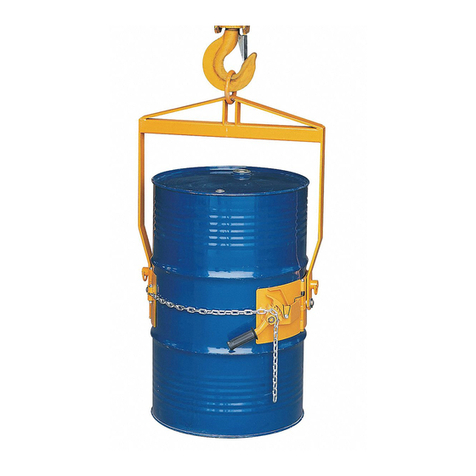
Grainger
Grainger 12R538 instruction manual
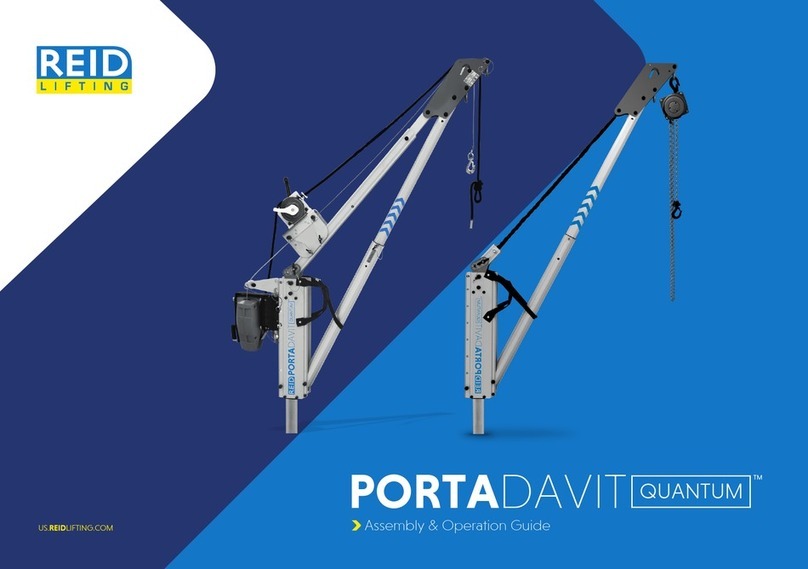
REID LIFTING
REID LIFTING PORTADAVIT QUANTUM Assembly & Operation guide
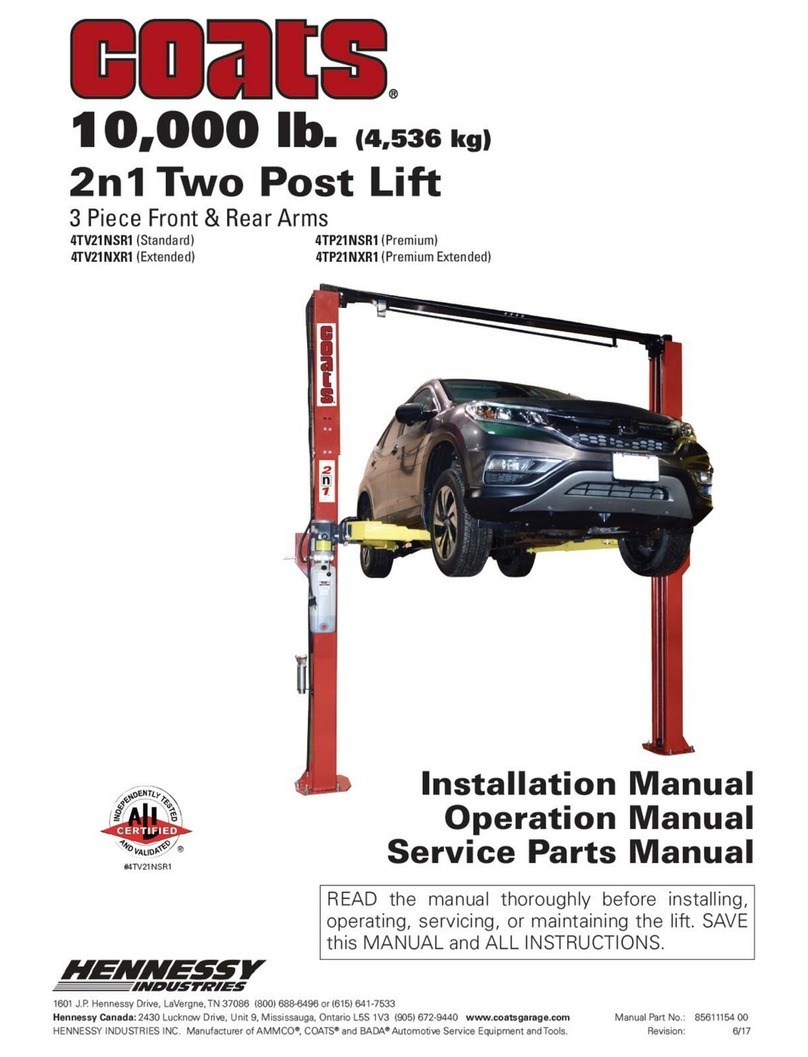
HENNESSY INDUSTRIES
HENNESSY INDUSTRIES coats 4TV21NSR1 manual
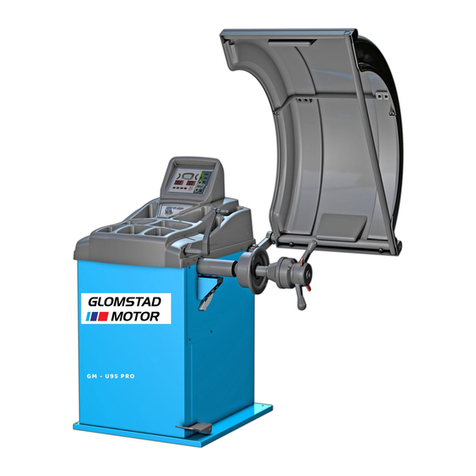
Glomstad Motor
Glomstad Motor GM - U95 PRO Use and maintenance manual
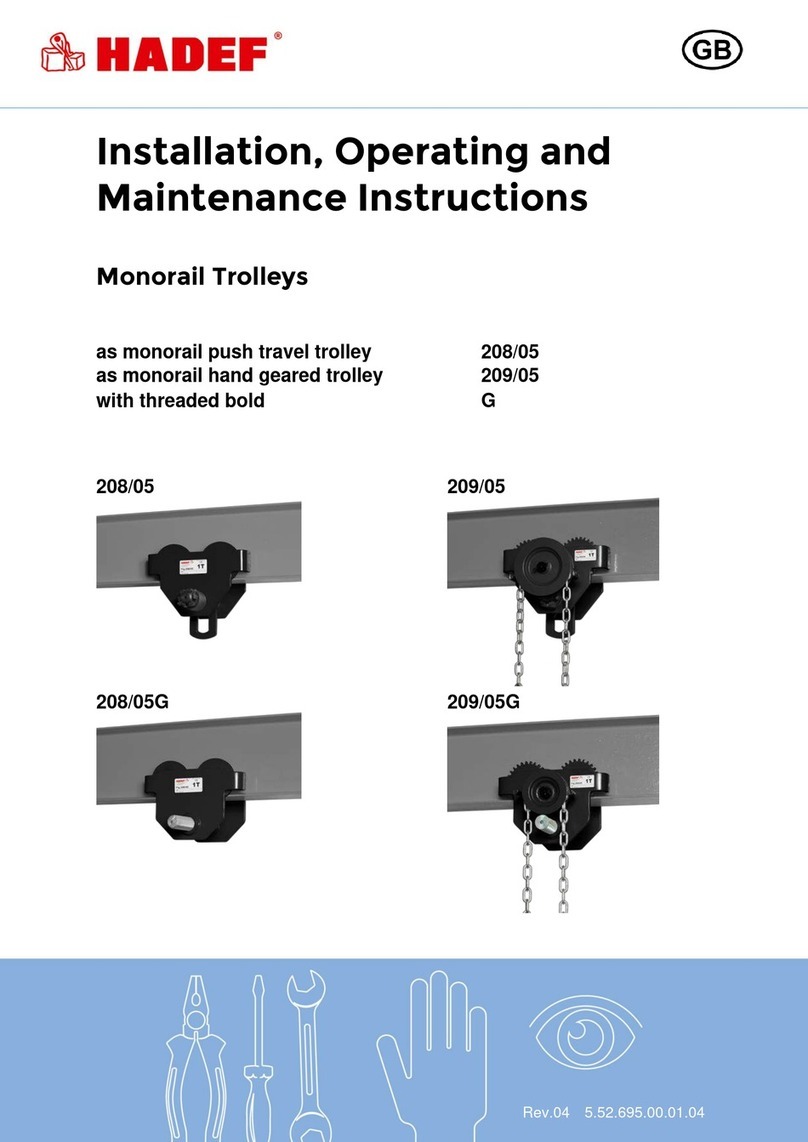
HADEF
HADEF 208/05 Installation, Operating and Maintenance Instruction
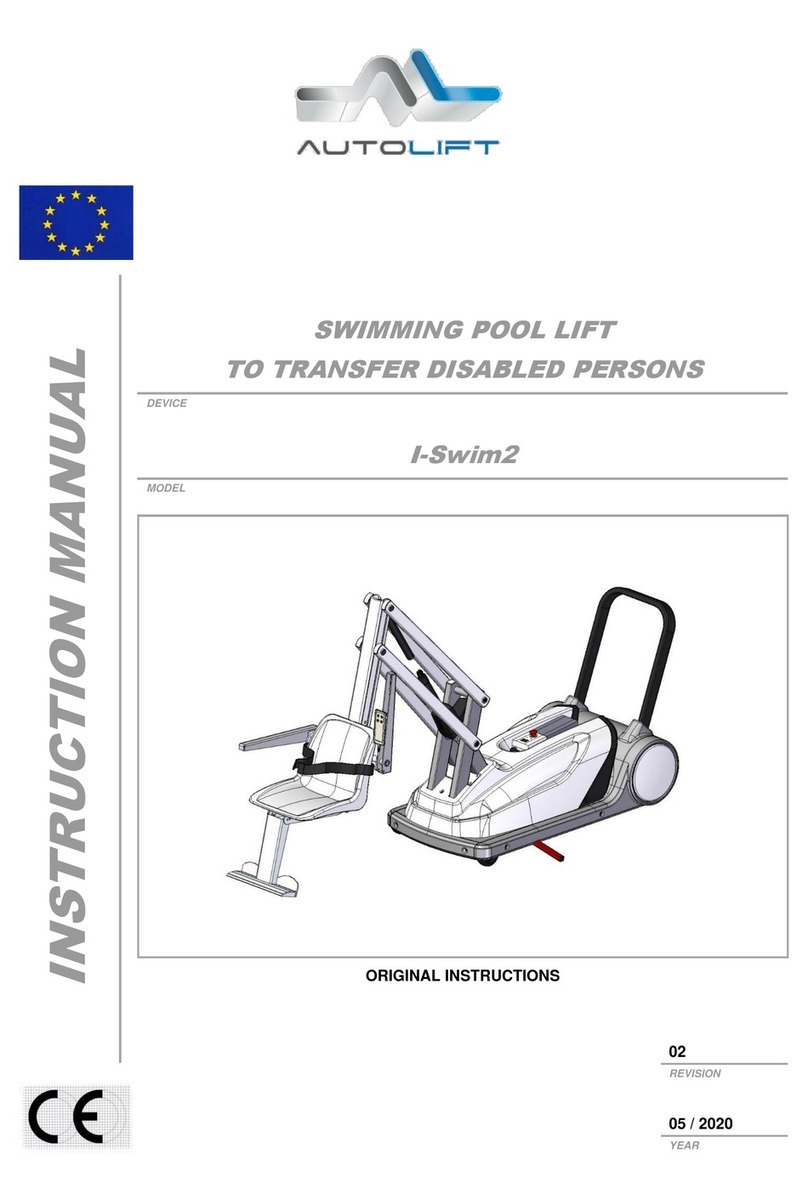
AUTOLIFT
AUTOLIFT I-Swim2 instruction manual

